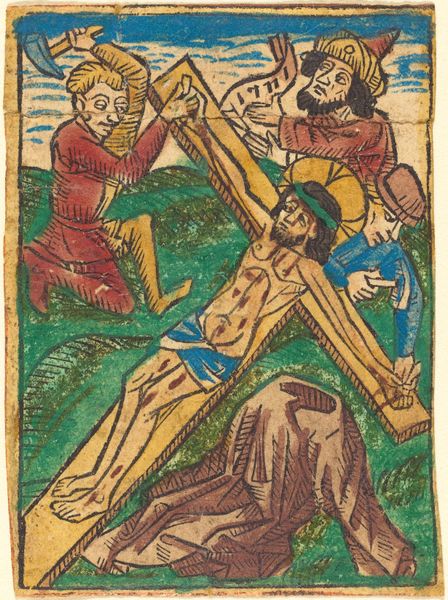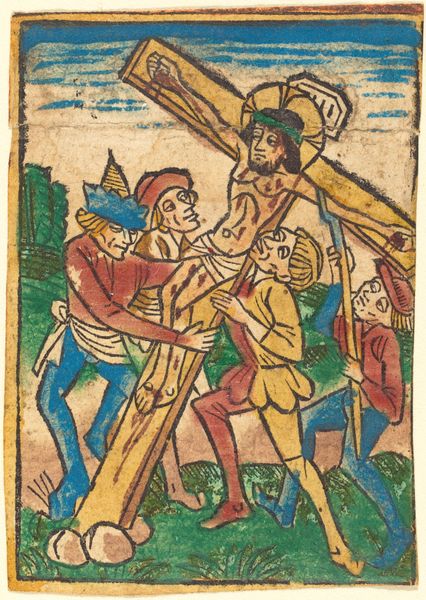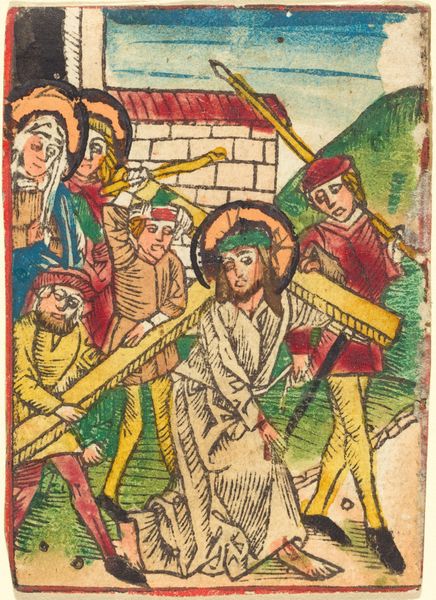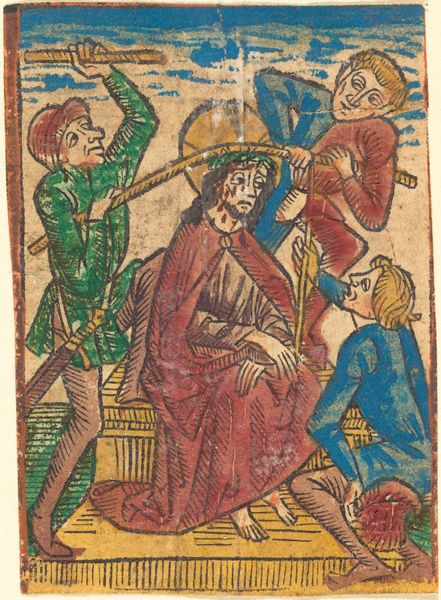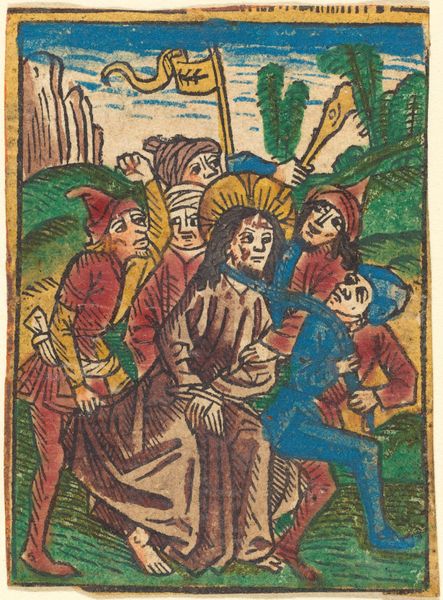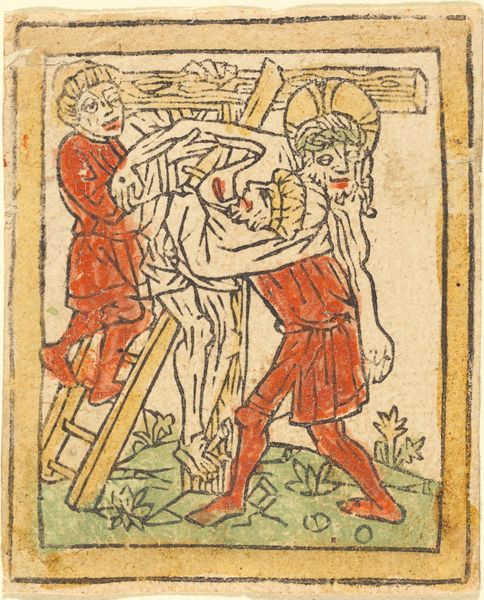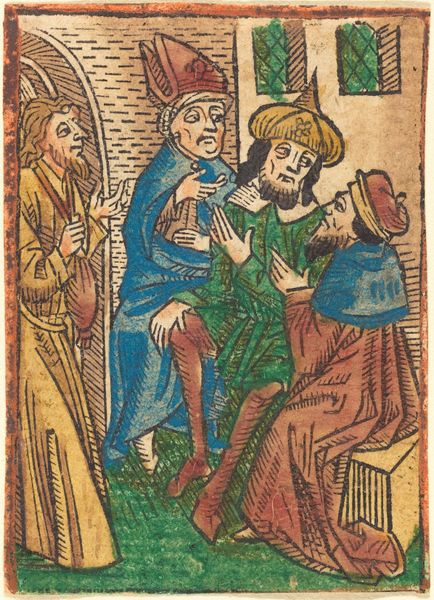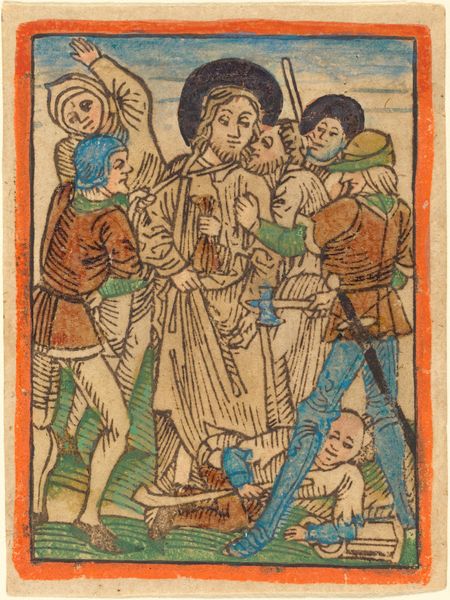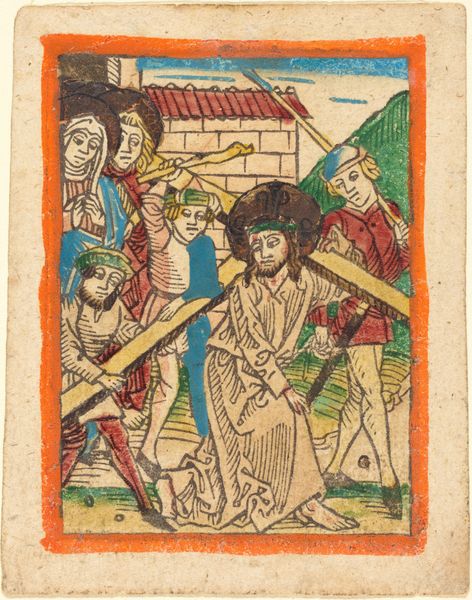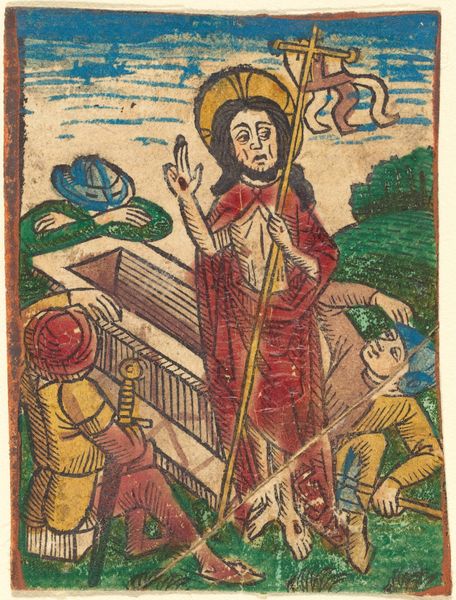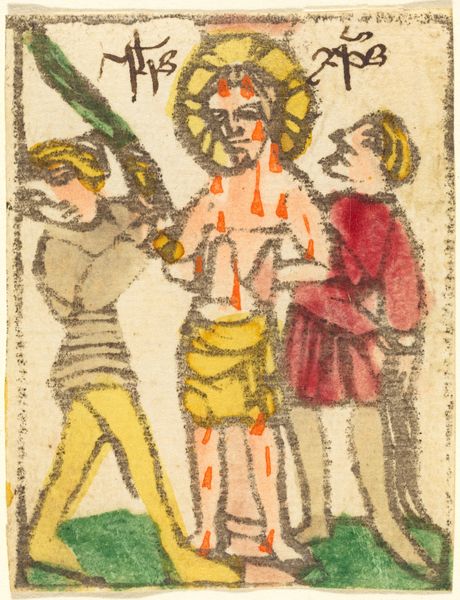
print, woodcut
#
medieval
#
narrative-art
# print
#
figuration
#
woodcut
#
history-painting
#
northern-renaissance
Copyright: National Gallery of Art: CC0 1.0
Editor: Here we have "Christ Stripped," a woodcut print from around 1490 by an anonymous artist. The scene is immediately disturbing; Christ is surrounded and assaulted. What stands out to you when you look at this? Curator: What immediately strikes me is the brutality on display and the passivity assigned to Christ, a familiar trope. However, I'm compelled to think about who created this image and for whom. The woodcut medium suggests a wider, more popular audience in the Northern Renaissance than, say, an illuminated manuscript for the wealthy. How might this depiction of suffering Christ function as a political statement? Is it simply about religious piety or does it serve to highlight the suffering of a particular group within that historical context? Editor: So, beyond the obvious religious narrative, you're suggesting we consider the social commentary embedded within the artwork itself. The suffering depicted might reflect the lived experiences of a marginalized community. Curator: Precisely! Think about the power structures at play. The image of Christ, stripped and vulnerable, could resonate with those dispossessed of their own power and dignity. In early capitalist Europe, class conflict and religious persecution were rampant. Could this image provide a form of visual resistance, subtly critiquing the ruling classes by identifying with Christ’s suffering? Editor: That really shifts my perspective. I hadn't considered the artist positioning Christ’s suffering as a reflection of broader societal injustices. Curator: What also catches my attention is how the act of distributing this image democratizes the narrative. Print allows for reproduction and broader dissemination of a very subversive reading of social inequality. This work gives an entry point to reflect on how systems of oppression are represented. Does seeing this brutality resonate with you today, knowing its history? Editor: Definitely. It forces me to consider the legacy of such images and their power to incite empathy, or even action, across different historical moments. Thank you for offering a lens that accounts for more than the image seems to convey at first look. Curator: And thank you. Your willingness to reconsider this piece encourages me to view it with ever-renewed hope and questioning.
Comments
No comments
Be the first to comment and join the conversation on the ultimate creative platform.
